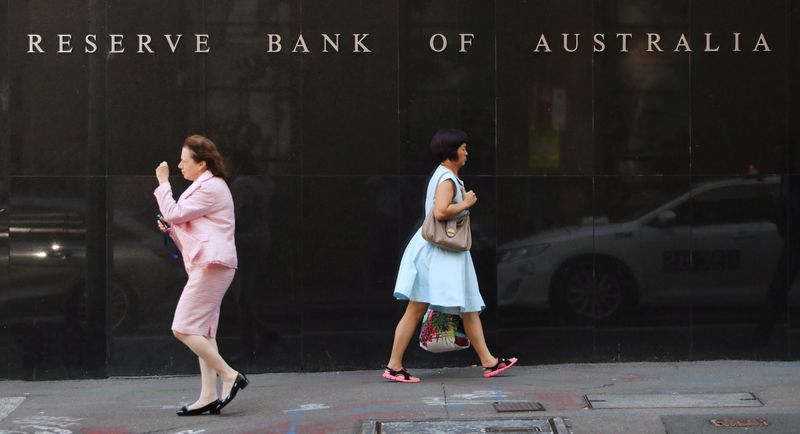
By Wayne Cole
SYDNEY (Reuters) – Australia’s top central banker said on Thursday that core inflation was too high to allow for rate cuts in the near term, all but ruling out relief for borrowers at its next policy meeting in December.
Reserve Bank of Australia (RBA) Governor Michele Bullock told an economic conference that core inflation of 3.5% in the third quarter was above the RBA’s goal of 2% to 3%, and policy needed to stay restrictive until it was confident the target band could be reached.
“As it currently stands, underlying inflation is still too high to be considering lowering the cash rate target in the near term,” Bullock said. “There is still some way to go to return inflation sustainably within our 2% to 3% target range,” Bullock said.
“Our forecasts published in the November Statement on Monetary Policy suggest that a sustainable return to target will occur in 2026,” she added.
Demand and supply in the economy were coming back to better balance as higher borrowing costs weighed on consumer spending, Bullock noted, but it would take time.
The central bank has kept its cash rate at 4.35% for an entire year, and markets had already seen only a 10% chance of a quarter-point cut at its next board meeting on Dec. 10.
The probability of a move in February is put at only 23%, and a drop to 4.10% is not fully priced until May.
That outlook is markedly different from most of the other developed economies which have already embarked on easing cycles. Neighbouring New Zealand slashed its rates by 50 basis points to 4.25% this week, taking them below Australia’s rates.
Bullock said these varying speeds reflected the different priorities central banks placed on their inflation and employment targets.
The RBA had sought to retain most of the substantial job gains made since the pandemic and therefore had not tightened policy as much as its peers.
“Consistent with this, inflation has been somewhat higher relative to target here than in most of those economies, and the labour market is also tighter,” she said.
The unemployment rate in Australia had risen by less than most of its peers this year and remained historically low at 4.1% in October. The demand for workers was also robust, particularly in sectors such as health care and education, Bullock added.
“Indeed, Australia’s labour market conditions appear unusually tight, relative to those in other peer economies,” Bullock said. “At present, we judge that conditions in the labour market remain tighter than what would be consistent with low and stable inflation.”






